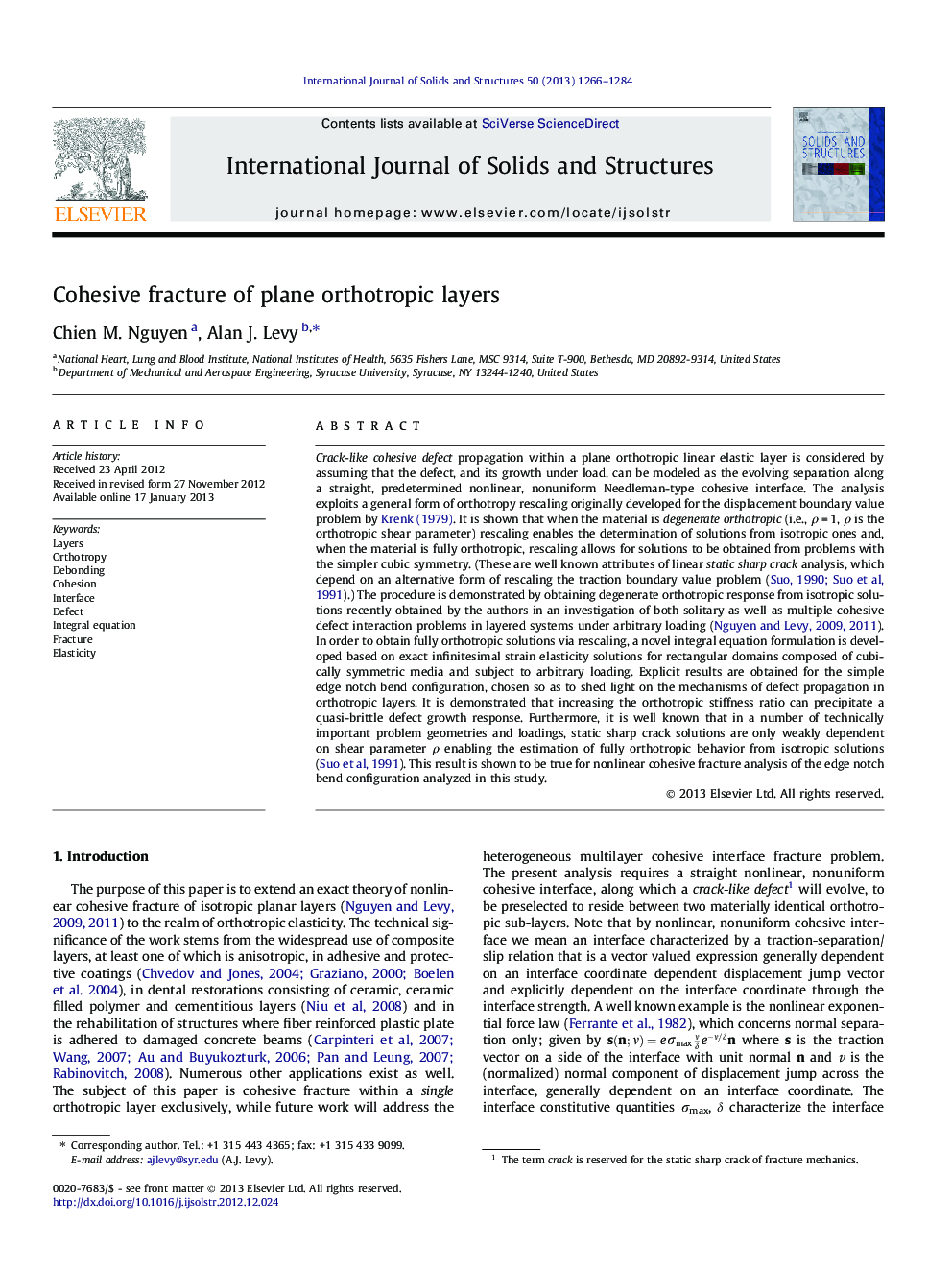| Article ID | Journal | Published Year | Pages | File Type |
|---|---|---|---|---|
| 6749246 | International Journal of Solids and Structures | 2013 | 19 Pages |
Abstract
Crack-like cohesive defect propagation within a plane orthotropic linear elastic layer is considered by assuming that the defect, and its growth under load, can be modeled as the evolving separation along a straight, predetermined nonlinear, nonuniform Needleman-type cohesive interface. The analysis exploits a general form of orthotropy rescaling originally developed for the displacement boundary value problem by Krenk (1979). It is shown that when the material is degenerate orthotropic (i.e., ÏÂ =Â 1, Ï is the orthotropic shear parameter) rescaling enables the determination of solutions from isotropic ones and, when the material is fully orthotropic, rescaling allows for solutions to be obtained from problems with the simpler cubic symmetry. (These are well known attributes of linear static sharp crack analysis, which depend on an alternative form of rescaling the traction boundary value problem (Suo, 1990, Suo et al., 1991).) The procedure is demonstrated by obtaining degenerate orthotropic response from isotropic solutions recently obtained by the authors in an investigation of both solitary as well as multiple cohesive defect interaction problems in layered systems under arbitrary loading (Nguyen and Levy, 2009, Nguyen and Levy, 2011). In order to obtain fully orthotropic solutions via rescaling, a novel integral equation formulation is developed based on exact infinitesimal strain elasticity solutions for rectangular domains composed of cubically symmetric media and subject to arbitrary loading. Explicit results are obtained for the simple edge notch bend configuration, chosen so as to shed light on the mechanisms of defect propagation in orthotropic layers. It is demonstrated that increasing the orthotropic stiffness ratio can precipitate a quasi-brittle defect growth response. Furthermore, it is well known that in a number of technically important problem geometries and loadings, static sharp crack solutions are only weakly dependent on shear parameter Ï enabling the estimation of fully orthotropic behavior from isotropic solutions (Suo et al, 1991). This result is shown to be true for nonlinear cohesive fracture analysis of the edge notch bend configuration analyzed in this study.
Related Topics
Physical Sciences and Engineering
Engineering
Civil and Structural Engineering
Authors
Chien M. Nguyen, Alan J. Levy,
